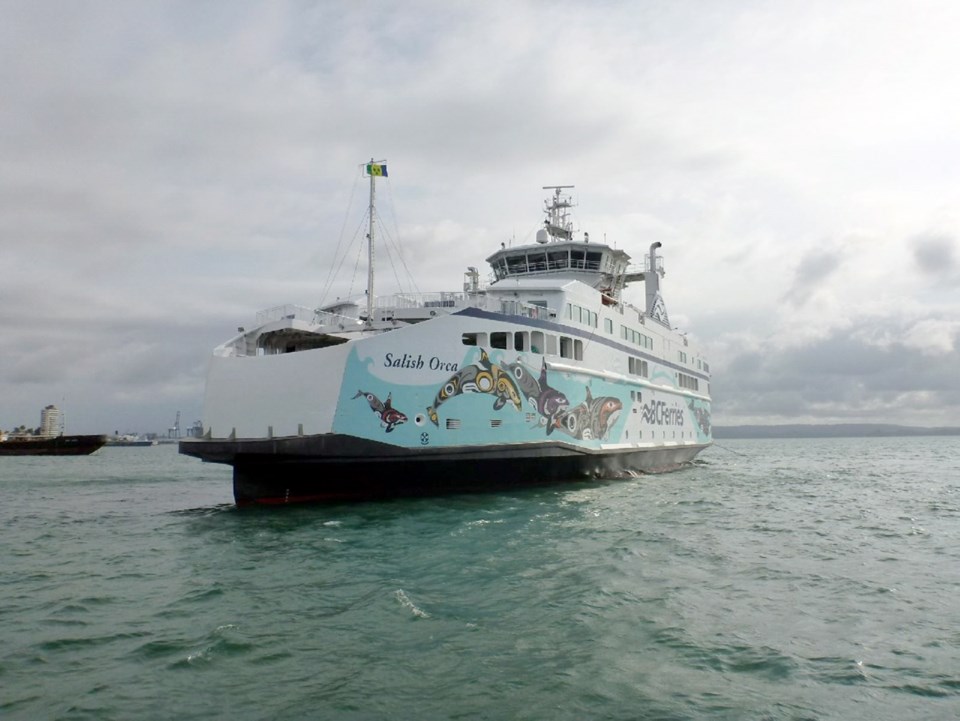Re: “Overseas ferry construction: Does it make financial sense?” Feb. 4.
This recent article highlighted the dilemma faced by many Canadian ferry owners and operators: Where will their next ferry be built?
A “build first in Canada” would be everyone’s preferred course of action. We all would want to build ferries in Canada and support our families, friends and neighbours who work in shipyards.
But a second option, building in other countries, was chosen in a number of recent instances across the country. The governments of Newfoundland and Labrador, New Brunswick, Québec and Ontario, as well as TransLink and B.C. Ferries, decided to build ferries in the U.S. and abroad in countries including Italy, Singapore, Poland, Chile, Germany and Romania.
Two key reasons explain this.
In some cases, requests for proposals issued by ferry operators receive no bids from Canadian shipyards. The explanation technically is a good one: Most shipyards are already at capacity due to activities with the National Shipbuilding Procurement Strategy.
Although the NSPS provides great long-term stability for our shipyards and workers, the reality is that other work, including building or repairing ferries, still has to be completed in a timely manner. That is why, for example, Seaspan had its own ferries built in Turkey, as it had no internal capacity.
Without question, Canadian ferry owners and operators would prefer to build in Canada. But it has to make sense. We can’t build in Canada when no bids are received from Canadian shipyards.
The second reason we are facing these issues, among many others, is competitive pricing. Canada has signed several trade agreements that reduce and/or eliminate tariffs on new passenger vessels. That has created interest from other countries for Canada’s ferry market. In the same way that Canadian companies can now better make a play for new markets in Europe, these international shipyards see Canada as an interesting market.
Recognizing these facts, and that our owners and operators were sometimes being forced to build overseas when no Canadian bids were received, the Canadian Ferry Association requested that tariffs be eliminated on new passenger-vessel purchases outside of Canada. The tariff had become nothing more than an additional tax on our members, and the federal government agreed.
Some have argued that the economic impact of building in Canada far outweighs any extra cost, and that the tariff for the purchase of new passenger vessels needs to be reinstated. That is short-sighted.
Eliminating these tariffs means that the millions of dollars no longer going to the federal government are being spent locally. Companies are investing those dollars in other projects that really benefit Canadians and communities, including terminal projects, training and longer-term capital investments.
The way to deal with the need for our shipyards to be competitive against international shipyards is not to close our borders and “build only in Canada,” but rather to give shipyards the tools they need to compete. And that should not be done on the backs of ferry operators. That’s a government responsibility — and we think that it is a federal government responsibility.
Whether it is to support the acquisition of equipment, long-term capital investments, training and retraining (as finding qualified workers is a real issue for shipyards) or other types of funding, governments will have to make a decision.
Canada is criticizing our neighbour to the south for its new wave of protectionist tendencies. At the same time, we also should not forget that shipyards cannot be arbitrarily chosen, even if they are Canadian, regardless of price and technical knowledge and expertise. A “build only in Canada” policy in the 21st century is not going to fly.
After all, where would it stop? Build in Canadian-owned shipyards or there will be no new ferries, which could potentially shut down essential routes?
This issue will not be solved by ferry owners and operators alone. Indeed, the Canadian Ferry Association tried, a few years ago, to engage shipyards (through their association) in an effort to find a solution. There was no response.
If this issue is going to be solved, it will require active participation from all stakeholders, including governments (federal and provincial), potential customers (not limited to the navy, coast guard and ferries but also commercial owners), shipyards, labour and other stakeholders (such as the Association of B.C. Marine Industries).
Increasing our competitiveness mirrors the spirit of entrepreneurship that Canadian companies have. A “build in Canada first” policy is what Canadian ferry owners and operators embrace and support, in order to keep people and goods moving across this great country of ours.
Serge Buy is the CEO of the Canadian Ferry Association, the national voice of the ferry industry in Canada.



